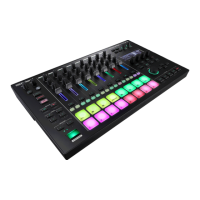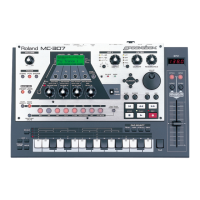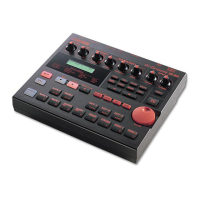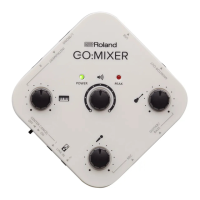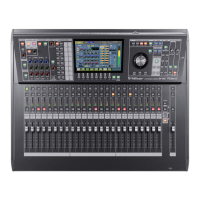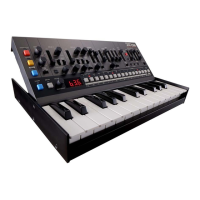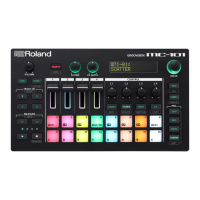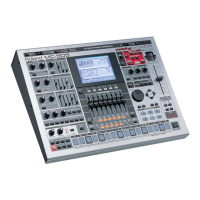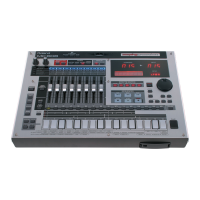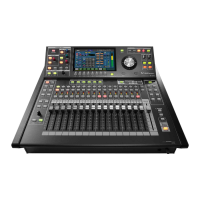27
Chapter 3. About the D-FIELD
Chapter 3
Playing arpeggios (ASSIGN 1: ARPEGGIATOR 2)
fig.AP2—
Arpeggios can be played using the root note and chord that you specify ahead of time. By varying the location at which you press
the D-FIELD, you can change how the arpeggio is sounded.
➔ Changing the D-FIELD settings (p. 22)
Making detailed settings
1. Hold down [ASSIGN 1] and press [EDIT].
2. Press [ENTER] to select the desired parameter.
3. Turn [VALUE] to modify the setting.
When you have created an arpeggio that you like, save it as a user style.
When you have created an arpeggio that you like, save it as a user style.
➔ Refer to steps 4 and following of “Making detailed settings” on the preceding page.
Display Explanation Setting
TYPE none none none
X Select the part that will be af-
fected when you move your
finger in the left/right direc-
tion.
OFF, STYLE, MOTIF, BEAT PATTERN, SHUFFLE RATE, AC-
CENT RATE, and OCTAVE RANGE
* It is not possible to select the same parameter for X, Y.
Y Select the part that will be af-
fected when you move your
finger in the up/down direc-
tion.
Display Parameter Explanation Setting
STYLE Select how the sound will be played. Refer to “Arpeggio set-
tings” (p. 28).
* Arpeggio settings are
common to Adlib and
Arpeggiator 1 and 2.
MOTIF Specify the order in which the component notes of the chord
will sound.
BEAT PATTERN Specify the pattern of accent locations and note lengths.
SHUFFLE RATE You can vary the timing of the backbeats to create shuffle
rhythms. With a setting of 50%, the notes will be spaced
equally. As this value is increased, the notes will be played
with a more “dotted” feel.
* When the Beat Pattern setting is 1/4, no “shuffle” feel will
be applied even if you increase the Shuffle Rate.
50–90(%)
ACCENT RATE You can add expression to the arpeggio by varying the
strength and note length of the accented notes. Increasing
this value will produce a greater sense of groove.
0–100
OCTAVE RANGE Specify the pitch range of the arpeggio in octave units. Low-
ering this value below 0 will cause the arpeggio to be played
in a pitch range below the chord you specified.
-3–3
ROOT Specify the root note of the chord. C–B
CHORD Select the type of chord. Major, minor, 7th, m7, M7,
mM7, 6th, m7-5, dim, sus4,
7sus4, aug
OCTAVE SHIFT Raise or lower the pitch that is sounded, in units of an oc-
tave.
-3–3
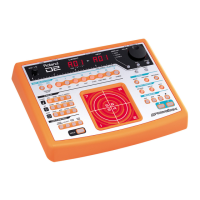
